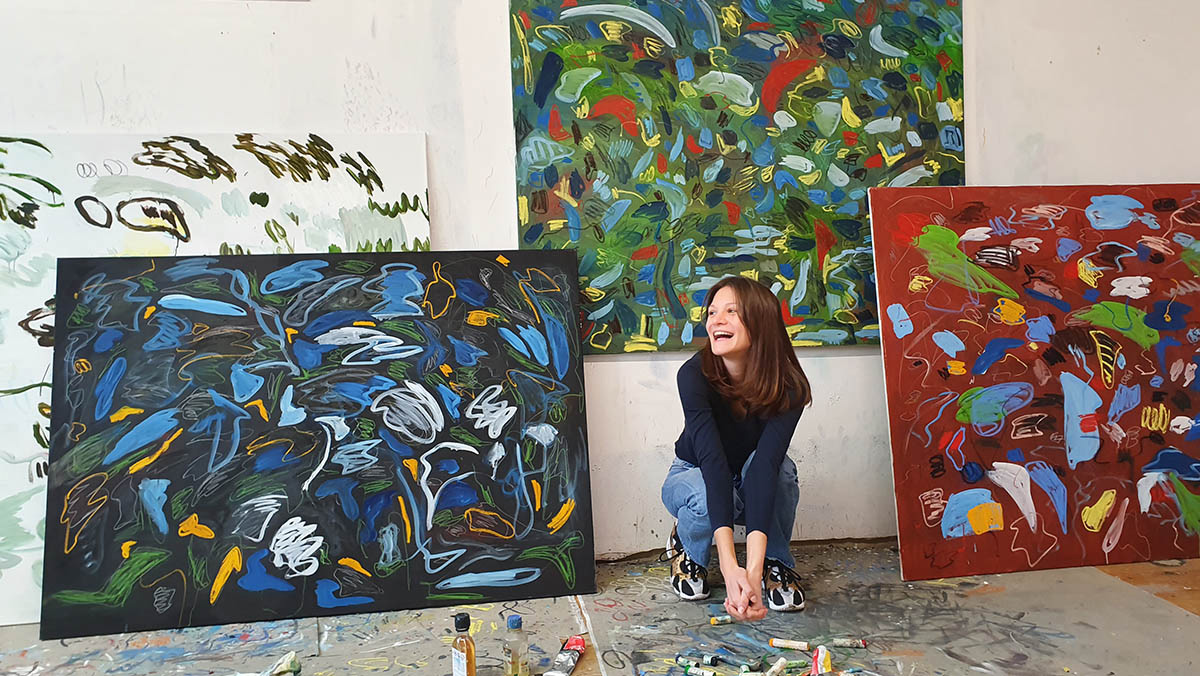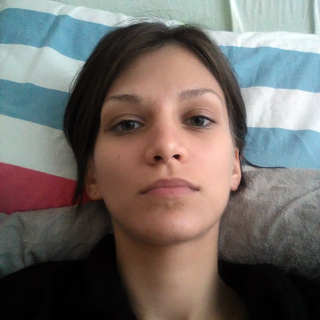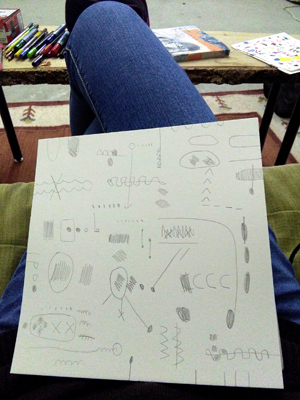A sign in a space
Who among us hasn’t scribbled in a notebook, a receipt, a school desk? Who hasn’t impulsively filled the margins and whole pages of calendars with meaningless hatches, patches and crosses? Who hasn’t carved initials and hearts in plaster or the bark of a tree? Exactly. A typical manifestation of one’s presence, marking of territory. In the urban space, these activities have been sanctioned, recognised and labelled as graffiti, writing, and finally street art, while many names and nicknames are no longer associated with vandalism but with artistic genius. However, this street manner, transferred to the canvas, seemed too nonchalant, sloppy and iconoclastic for a very long time. But why?
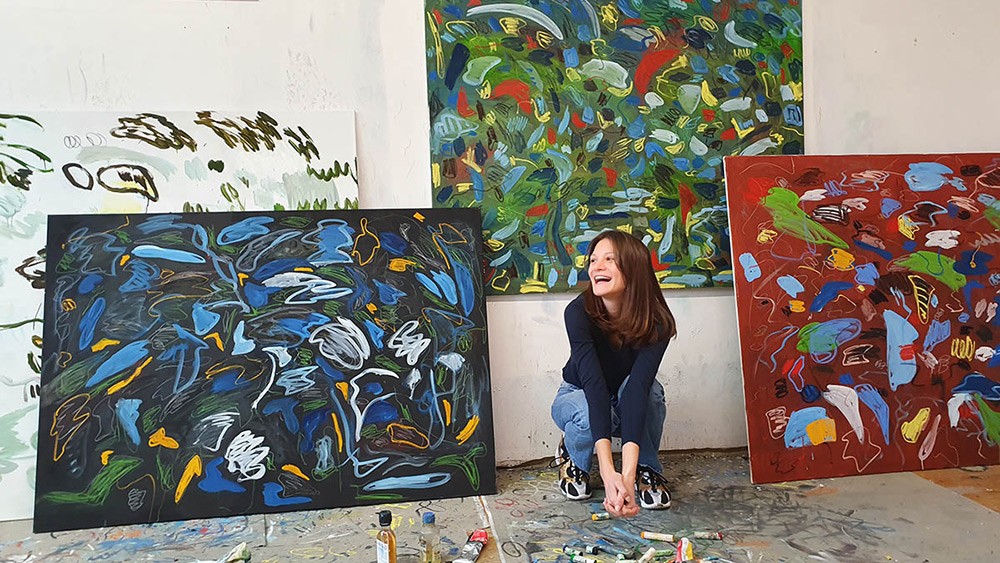
In Kalina Horoń’s paintings, we find echoes of our own intuitive scribbles, traces of signs from the walls of city buildings, gates, bridges and viaducts. We let the whirl of colours and childish symbols sweep us away.
The apparent chaos and carelessness of the gesture of these images are deceptive and may lead the viewer astray in their superficial interpretation and shallow evaluation. Because there’s nothing really careless or random about it. There is a thoughtful composition behind the seemingly chaotic set of colourful signs. The artist builds her picture methodically and with thought. And since the effect is light and the image seems to be made in a carefree moment, its craftsmanship is even greater.
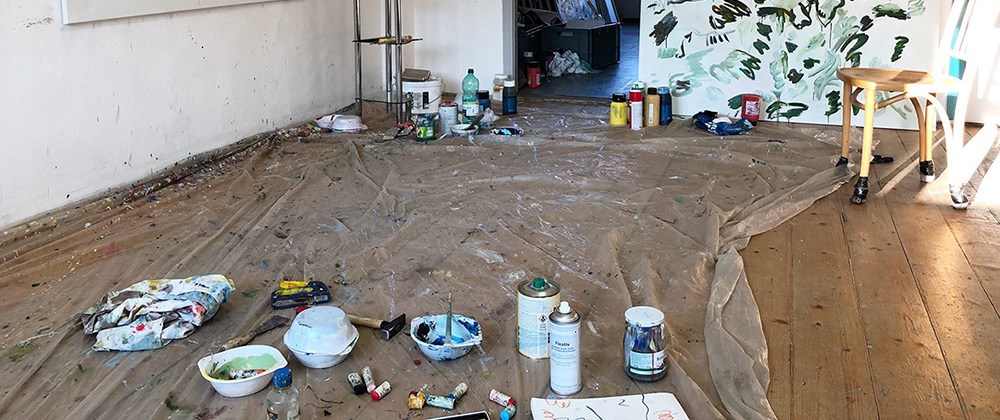
Kalina consciously refers to graffiti culture, to Jackson Pollock’s action painting, to her favourite neo-Expressionists like Jean-Michel Basquiat or Jonathan Meese, whom she calls her personal genius.
Instead of a brush, she prefers to use markers, paint sticks, sprays, and even a stick dipped in paint.
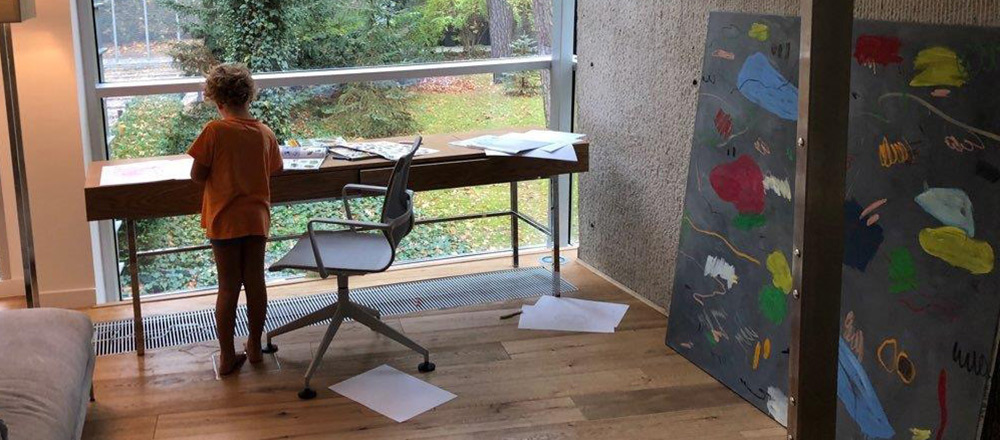
Another association that comes to mind – the similarity of Horoń’s paintings to musical notation – also makes sense, because the artist plays the violin and the rules and aesthetics of musical notation may even translate intuitively into the language of painting. She likes to quote Witold Lutosławski: “I don’t look for anything in my paintings that’s outside of them. Just like in music, I’m not looking for anything that is beyond music itself. Nothing but emotion. After all, music is the art of emotions, emotions of great variety”.
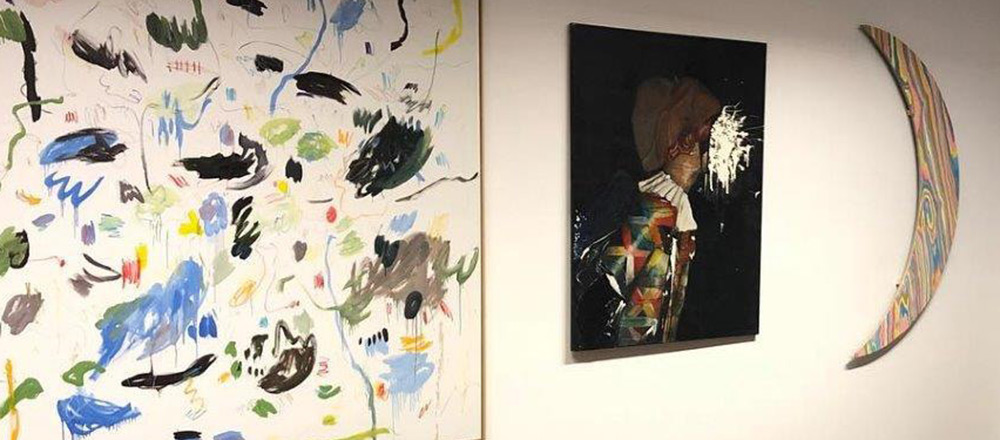
Kalina Horoń’s abstract paintings don’t appear out of nowhere, of course. The artist emphasises that her painting is the result of experiencing the world. Jean Miró, another one of her masters, said: “Every shape, every colour in my works comes from an element taken from reality. Concepts such as ‘pure form’ or ‘pure colour’ mean absolutely nothing to me”. Kalina takes individual elements out of the multitude of experiences, impressions and stimuli, translates them into the language of symbols and arranges them on the canvas in her own way. In her latest paintings, there is more and more white, light and air – as if her signs float in the space inflated with helium. It is a pure affirmation of life. This message gets to me, it is what I want.
I will quote Miró once again: “More important than the work itself is the effect it produces. Art can die, a painting can be destroyed; what matters is that it scatters seeds on the ground.”


